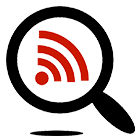Episodes
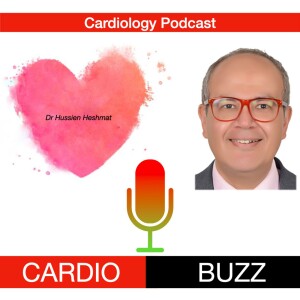
Saturday Apr 30, 2022
Saturday Apr 30, 2022
The new heart failure guidelines were released this month. Last week, we summarized staging, classification, and diagnostic workup points. You can find the contents of the first part as an audio in the last week of cardio buzz or on the Cardio Buzz Youtube channel.This week we will summarize the management of heart failure. Bring in your coffee because, again, this article will be rich in information and will need all our attention.Guidelines Full Text 👉 https://www.ahajournals.org/doi/10.1161/CIR.0000000000001063Cardio Buzz on YouTube 👉 https://www.youtube.com/c/DrHussienheart-talks/featuredCardio Buzz on LinkedIn 👉 https://www.linkedin.com/newsletters/weekly-cardiology-buzz-6923878426843971584/
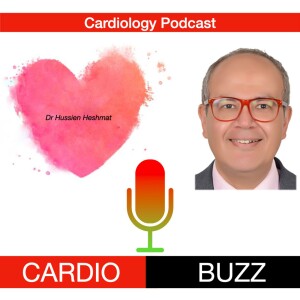
Saturday Apr 23, 2022
Saturday Apr 23, 2022
The AHA, ACC, and HFSA have all joined efforts and just released the latest guidelines on heart failure. If you are a clinician, a nurse, or a healthcare provider involved in the care of patients with HF then these guidelines are for you. The full text comes in a big document of 138 pages. I will summarize the main points here over two episodes. The first episode will be on staging, classification, clinical assessment, and diagnostic workup. The second episode will describe the basics of treatment. So bring in your coffee because the episode will be rich in information and will need all our attention.https://www.ahajournals.org/doi/10.1161/CIR.0000000000001063
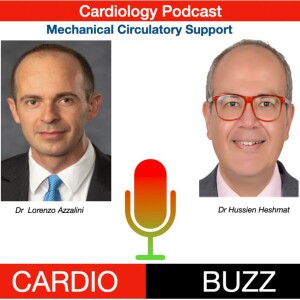
Saturday Apr 16, 2022
Saturday Apr 16, 2022
We all know that heart disease is the number 1 killer worldwide. And patients die either because of acute coronary syndromes (myocardial infarction) or because of left ventricular dysfunction (heart failure). And, as an interventionist, being trapped with both evils; severe coronary stenosis and left ventricular dysfunction is scary. The only solution then is usually revascularization but it also comes with risks of myocardial injury and impaired organ perfusion. There is already an entire system with bypass surgery that perfuses the organs while the heart is paralyzed, the bypass machine. Unfortunately, surgery is not always available, many patients refuse surgery, and others may be declined by the surgeons because of their high risk. Here, cath interventions are the only hope. In addition to the gadgets available to handle the coronary occlusions, there is a need for devices to support the circulation and blood pressure during cardiogenic shock or when the heart is stunned during complex coronary intervention. The last thing we want is to have a patient crashing on-table or shortly after.And to review these devices that support the heart and the circulation in complex PCI (I call them the guardian in the cath lab), I am glad to host today one of the International experts on complex coronary interventions and mechanical circulatory support. Dr. Lorenzo Azzalini. Dr. Azzalini is the Director of the Complex Coronary Interventions Program and associate professor of medicine at Virginia Commonwealth University, in Richmond, VA. Before joining VCU he was co-director of the chronic total occlusion program at San Raffaele Hospital in Milan, Italy. And San Rafaelle was one of the centers of excellence in Europe. Dr. Azzalini’s clinical and research expertise is represented by chronic total occlusion PCI, atherectomy, mechanical circulatory support, and acute kidney injury after PCI. He has over 170 international publications, more than 3700 citations, has received numerous international awards, is a member of the editorial board of the Canadian Journal of Cardiology, Eurointervention, Cardiovascular Revascularization Medicine, and Minerva Cardiology and Angiology, and is a guest reviewer for other twenty journals. And he is a wiz inside the cath lab. I had the chance to work with him several times in the cath lab and I would describe his skills as amazing.
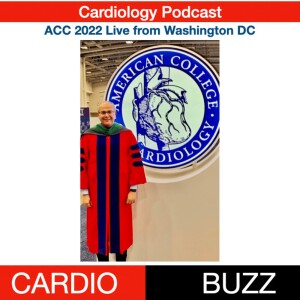
Saturday Apr 09, 2022
Saturday Apr 09, 2022
Washington was calm, cold, and rainy in the first days of Ramadan but it was totally worth it because the American college of cardiology ACC meeting was back in person after two years of virtual attendance.In this episode of cardio buzz, we are bringing you, what we think are, the best late-breaking trials announced in the ACC meeting last week. More than 20 trials were announced as late-breaking as well as another bunch of featured clinical research. I decided to choose only 5 trials to present here. Choosing the top 5 articles was challenging. I chose the ones that I felt will have a bigger impact on your practice, bring in newer concepts, or change our views on medicine in general.Let’s start the count downNumber 5; PROMPT-HFElectronic medical records changed the way we practice medicine. They have obvious advantages but I can’t hide the fact that it makes us spend more time with screens than with patients. However, these electronic systems can prove useful in other aspects. By nudging the doctors, we might improve our prescription habits and overcome our inertia in prescribing medications or up titrating them. And one of the domains in which inertia is clear is heart failure. GDMT is under-prescribed in patients with heart failure. We usually don’t prescribe the 4 essential medications and we rarely up titrate them to the maximum tolerable dose. And the PROMPT-HF trial was not a study on patients, it was a study on doctors. 100 healthcare providers, caring for patients with HFrEF in the outpatient were randomized to either an alert or usual care. one-third of them were not physicians. The alert started working at the moment of prescribing medications. It highlighted the patients’ creatinine, potassium, blood pressure, eGFR, heart rate, and EF. The system notified providers of missing medications and the need to build up the dose. The electronic alerts increased GDMT prescription by >40% and were highly significant for beta clockers. 79% of alerted doctors agreed that the alert was effective at enabling improved prescription of medical therapy for HF. This low-cost intervention can be rapidly integrated into clinical care and accelerate the adoption of high-value therapies for heart failure. So next time, don’t be angry when the system alerts you to the need of increasing the beta-blocker dose.Number 4 CHAP trial Treating mild chronic hypertension during pregnancy.We know that treating hypertension does prevent strokes, MI, and heart failure but the situation in pregnancy is more complicated. Unless hypertension is severe and complicated by eclampsia, we did not have evidence that treating hypertension can improve pregnancy outcomes given the potential hazards of the drugs on the fetus. The CHAP trial enrolled 2,408 women with mild chronic hypertension (
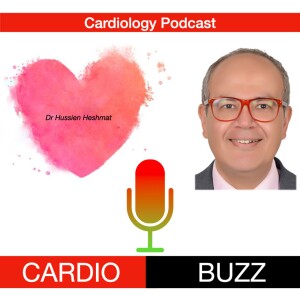
Saturday Apr 02, 2022
Saturday Apr 02, 2022
It is the first day of Ramadan, the holy blessed month observed by 1.8 billion Muslims around the world. This is a month with a mix of religious rituals, historical traditions, and family gatherings. It happens also to be an occasion for big meals, TV serials, and commercials! So I must say to all of you… Ramadan KareemBut when patients ask me “doctor, what should I do in Ramadan” I get a bit anxious. The answer to that question involves and mix of science and religious teachings. Even if you are a devout Muslim doctor, the answer won’t come easy as you need to be balancing from both the religious aspect, respecting the patient’s desire to fast, and the health aspect to avoid potential harm to your cardiac patient. And to make it worse, we don’t have enough randomized or observational studies to guide us on what to do exactly in different cardiac conditions. So most of the advice we gave to patients was based on our own personal views which is not exactly called “science”What we know is that fasting as a concept is useful. The benefits of intermittent fasting on cardiovascular health are proven and Ramadan fasting was shown to reduce systolic and diastolic BP and was even associated with improved anginal symptoms in patients with chronic ischemic coronary syndromes. But Ramadan fasting is different from intermittent fasting; there is no water and no medicines. There is always the risk of hypotension, dehydration, and thrombotic tendency during the long fasting hours, especially in the summertime and in frail elderly patients. Dehydration may increase the risk of arrhythmia like ventricular ectopics, and atrial fibrillation and is very risky in patients with long QT syndrome, Brugada syndrome, or patients taking digoxin or class I antiarrhythmic drugs. Also in one multi-center study, patients who undertook Ramadan fasting within 3 months of percutaneous coronary intervention had a higher incidence of significant cardiac events than those who did not undertake Ramadan fasting. Moreover, if fasting times are more than 12 hours, then twice daily dosed medications will be disrupted with a potential for overdosing and under-dosing. Patients receiving two times per day DOACs were noted to be more likely to change their anticoagulation administration and more likely to be admitted to the hospital as a consequence of their changes, for example, bleeding or stroke. And the habits in the middle east of food consumption after sunset breakfast “Iftar” are far from the essence of intermittent fasting. This meal can get heavy with lots of dates, sugary drinks, and full-loaded oriental sweets are made special in celebration of the holy month. This is a major disruption of blood sugar control in diabetic patients. And I would like to refer you to the nice scoring developed by Diabetes and Ramadan DAR group which guides patients and physicians on who can fast and who shouldn’t. You can also check the previous episode of cardio buzz where our nephrology expert provided guidance on fasting for renal patients.So who can fast Ramadan and who should not fast? There is a good consensus document from a group of British doctors in the NHS, published in Heart open journal last May. And I think it came on time. The link to the article is in the description. The eight authors scanned the literature for trials on fasting and cardiovascular disease and added their personal insights, and the work was supported by the British Islamic Medical Association. https://www.daralliance.org/daralliance/idf-dar-practical-guidelines-2021/https://heart.bmj.com/content/108/4/258
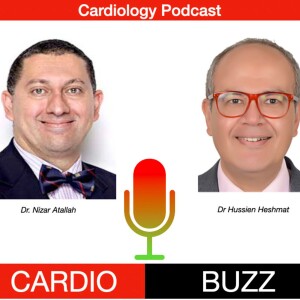
Saturday Mar 26, 2022
Saturday Mar 26, 2022
Lots of interactions between the kidneys and the heart. Cardiometabolic medicine is evolving with exciting news for both cardiac and renal patients.Should a patient with kidney disease fast in Ramadan or not.All these questions were answered in this interview with Dr. Nizar Atallah.
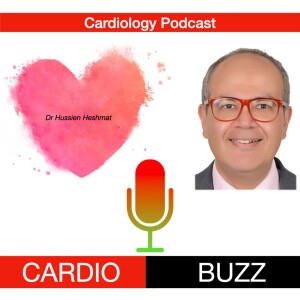
Saturday Mar 19, 2022
Saturday Mar 19, 2022
https://jamanetwork.com/journals/jamanetworkopen/fullarticle/2788582We are in March, a month that marks international women’s day and also mothers’ day in the middle east, some African countries, and many European countries. Speaking of women's health, we tend to focus emotionally on depression, breast cancer, and osteoporosis. Whereas in fact, cardiovascular disease is the leading cause of death in women with roughly one out of every five deaths being due to CV disease.And we are familiar with the classic risk factors for coronary artery disease are diabetes, hypertension, dyslipidemia, smoking, etc but other factors can also modify the development of atherosclerotic and thrombotic disease. Nontraditional risk factors like social background, ethnicity, race, income, education, social support, etc. And we are exposed to social stresses throughout life. But as people grow older, life changes; retirement, deaths of family members and friends, and decreasing activities of daily living. These life changes contribute to decreasing social network size. And women, particularly older ladies, tend to experience more social isolation than men because they are more likely to be widowed, live alone, and get lower incomes.Today I chose a paper published in the JAMA open last February. The paper tested the impact of two, potential social determinants of disease; namely loneliness and social isolation. And we need to differentiate the two. Social isolation is the objective measure of social interactions and relationships, loneliness is the subjective feeling of being socially isolated. The researchers looked at 57,825 healthy American ladies 65 years old and above. None of them had any coronary disease or stroke. This was part of the investigation called the women's health initiative extension II. They followed those old but healthy ladies for 8 years from 2011 until 2019They measured a social isolation index score based on marital status, living situation, and frequency of social activities. Participants answered questions about being married or not, living alone, how often do you meet family and friends or call them by phone, how frequently do you go out to religious places, cinema, eat outside or go shopping. A higher score meant worse social isolation. They also measured loneliness using a scale based on questions that reflected feelings of isolation, lack of companionship, and being left out. Again, a higher score meant more loneliness. They also looked at other variables like diabetes, depression, the level of social support, the quality of the diet, and the level of physical activity. Women with the (higher) worst loneliness scores have a 14% higher chance of cardiovascular disease. Women with worse social isolation scores also had an 18% higher chance of cardiovascular disease. So now, social isolation and loneliness can be considered risk factors for coronary artery disease. What’s the explanation? Over time, the experiences of social isolation and feelings of loneliness disturb autonomic function, increase systolic blood pressure control, and evoke an inflammatory response. These may lead to hypertension and atherosclerosis. The study has limitations, of course. It was just an observational study. But it highlights the need for further research to evaluate the effectiveness of whatever interventions to reduce social isolation and loneliness and see if they can mitigate CVD risk or not. But what we are sure of is that we need to measure social isolation and loneliness in primary care. Maybe we also need to increase referrals for mental health assessments which can be done aided by AI. But the bottom line is loneliness and social isolation are bad for your mothers’ heart. So, no matter what, don’t leave your mom alone!
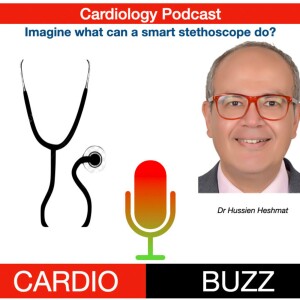
Saturday Mar 12, 2022
Saturday Mar 12, 2022
It was back in the 19th century, exactly in the year 1816, Rene Laënnec, a French doctor was walking alone in the Louvre Palace in Paris. The 35-year-old physician and surgeon, observed two children playing by sending signals to each other using a long piece of solid wood and a pin. One child scratched a pin on a side of the wooden piece and the other child placed his ear on the opposite end of the wooden piece and received the amplified sound of the pin. Laennec loved the idea as he was a gifted musician who used to make and play on flutes.Shortly after, Laënnec who was known to be shy was called to see a lady with suspected heart disease. The lady was young and chubby, and so the bashful Laënnec was reluctant to stick his ears directly to her chest, which was the only way to listen to heart sounds at that time. In his moment of embarrassment, Laënnec recalled his observation of the children’s wooden sound transmission. That observation inspired his invention of the device which is now the symbol of physicians “the stethoscope”The first generation was a rolled tube to funnel where one end was on the patient’s chest and another side on the doctor’s ear. He called it the “stethoscope” derived from the Greek words stethos, meaning chest, and skopein, meaning to explore. For 200 years, the stethoscope was essential to any physical examination with dedicated cardiology types and pediatric types. However, the importance of the stethoscope has declined dramatically in favor of more sophisticated technologies. Clinical skills in general are dwindling. There has been a constant decline in practitioners’ ability to correctly identify heart sounds through auscultation, the accuracy of 22% in American trainees and slightly higher in fellows. No surprise as we are counting more on echo, angiography, CT, and MRI. We and patients trust these more than the good old stethoscope.But now, we are in the age of smart tools. We have smartphones, smart bags, smart lamps, and smart homes. How about a smart stethoscope? What would that look like and how useful would it be? Can it revive the dying stethoscope? Can it compete against the echo for example?https://doi.org/10.1016/S2589-7500(21)00256-9
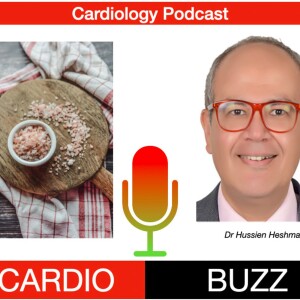
Saturday Mar 05, 2022
Saturday Mar 05, 2022
https://www.escardio.org/Journals/E-Journal-of-Cardiology-Practice/Volume-22/salt-and-hypertension-current-viewsWhen you hear the word “salt” What’s the first thing that comes to the mind White crystals that give food its taste, pickles, potatoe chips, snacks, high blood pressure and low blood pressure…Whatever came across your mind, we must admit that salt is deeply rooted in our culture. In the roman times, it was called the white gold. A famous roman saying “Trust no one unless you have eaten much salt with him”. We say we have eaten bread and salt so we will remain faithful forever.But when it comes to medicine, many questions need to be answered. What’s the relation between salt and hypertension or hypotension? How much salt do we need to take to stay healthy? Which foods have high salt content and which foods are free of salt? Hello and welcome. My name is Hussien Heshmat, professor of cardiology, and this is my Cardio Buzz my weekly podcast where we provide updates on cardiology news, research, conferences, and products. These questions on salt were answered in a recent review article in the European society of cardiology E journal of clinical practice. I am placing a link to that nice and comprehensive review. And I am glad to interview today Prof Ghada Sayed, associate professor of cardiology at Cairo University, my colleague for almost 20 years. Dr Ghada has done lots of research on hypertension epidemiology including salt surveys, she shared in writing Egyptian hypertension guidelines in 2014, she moderate specialized hypertension clinics in Egypt, and she is also of course the author of the ESC review on salt and hypertension.
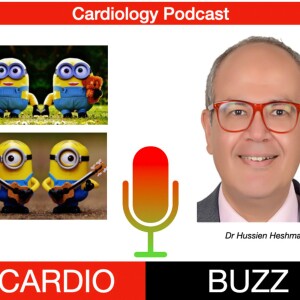
Sunday Feb 27, 2022
Sunday Feb 27, 2022
You probably recognize the minions. Those tiny yellow characters featured in three motion pictures. I personally love them. Capsule-like small creatures with wide eyes, blue overalls and peculiar cheerful funny laughs and squawks. And I share with them their love for bananas!Kevin, Stuart, Dave and Bob are four of the most familiar minions. Individually they are small but each one has a special talent and when they work together they can create marvelous tools and solve the most difficult problems for the film’s main character.Speaking of difficult problems, hypertension is one problem that affects billions of people. Most of us, if we live to our eighties, will become hypertensive. And the control rates are poor in the developed countries. The traditional treatment is based on giving one drug in the standard dose or combining two of those two also in standard doses to lower the blood pressure.But, how about combining four (mini doses) minions of antihypertensives in one pill! Would that pill do better than a standard dose of a single good antihypertensive?This question was tackled by a trial called QUARTET trial was presented at the ESC Congress last August then published in the Lancet last September.The trial was a multicentre, double-blind randomised, trial of 571 Australian adults with hypertension, who were untreated or receiving monotherapy. Patients were randomly assigned to either quadpill or a mono therapy. The quad pill (contained 4 medications, each in one fourth of the standard dose; irbesartan 37·5 mg instead of 150, amlodipine at 1·25 mg not 5, indapamide at 0·625 mg not 2.5, and bisoprolol at 2·5 mg not 10 or even 5) or an indistinguishable monotherapy control (irbesartan 150 mg). If blood pressure was not at target, additional medications could be added in both groups. The researchers looked at BP control, safety and tolerability a 12 weeks then 12 months. And guess who won?SBP was about 7mmHg lower in the quadpil (allow me to call it the minion group) and control rates were 30% higher compared to the monotherapy group without difference in adverse events. The better BP control was sustained at one year with minions. Significantly less patients in the minion group) required additional BP medications compared to the mono therapy groupI consider this one of the key research papers in hypertension. I can think of several future implications of this conceptNumber 1: This is a further step in combination therapies for HTN. Not just two as recommended in many guidelines. With four mini doses, multiple pathophysiologic pathways tackled in one pill; sympathetic , RAS, sodium overload, vasoconstriction in small doses with less adverse effects. This can overcome physicians inertia and improve patients adherence to treatment.Number 2: Polypill is revived. Expect to see trials combining not just several BP medications, but also with statins and aspirin. NEJM trial on polypill in socioeconomic classes, cheap, more compliance, better BP and LDL reduction.Number 3: I expect the idea may be adopted by the pharma to manufacture different doses and different combinations not only triple combinations as we currently haveNumber 4: Boost to personalized medicine. Think of the tens of permutations that could come from different doses of four medications. Maybe in the future, the local pharmacist can add tailor your minion pill combinations; more beta blocker for the young, less diuretics for an elderly…etc







